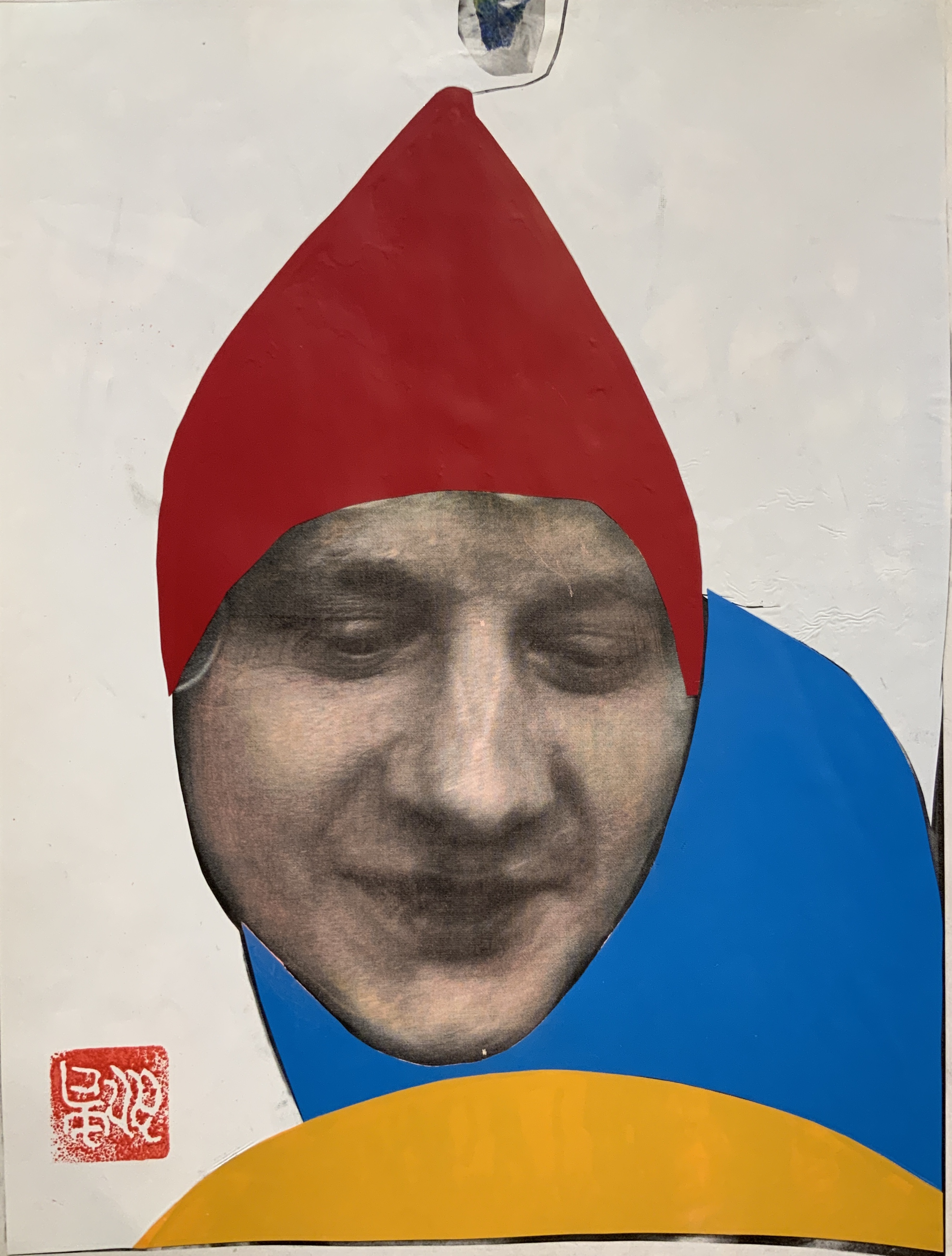Rufus Tureen: Type
February 6 - 28, 2021Opening Reception: Saturday, Feburary 6, 12-6pmPerformance on IG Live @essexflowers: Saturday, February 14, 3pm

Rufus Tureen Mona Lisa Vinyl appliqué and chalk pastel on inkjet, 2021.
Here is a thought experiment about painting and acting.
Close your eyes and perform your visual slideshow of Painting. Mine goes: handprints on a cave wall, a disc thrower on a pot, DiVinci grimaces, Pollock splatters, Andy Warhol sitting cross legged in a French sweater on a tall chair with wayfarer sunglasses on, then a painted object ticking like a clock by Laura Owens. This is just one list, one set of memories that give me access to the language to articulate what I think about painting. They are types. I learned to “speak” painting by looking at paintings, and by making them, reconstructing them in my imagination and in my hands, the same way you learn words by looking at them, using them in your mind and making them with a pencil in your hand.
Now imagine your favorite actors. Mine goes: Jimmy Stewart, Humphrey Bogart, James Dean, Kirsten Dunst, Meryl Streep. Again, not an academic list, but what I intuitively call to mind. They are actors who attempt to speak as if speaking. What the Russian Theatre Giant Stanislavsky dubbed “the art of experience” vs a less “real” “art of representation”. This kind of art form excels when it's least observable. A form that at the top of its game is invisible.
An important part of this magic trick is the actor’s Type. The headshot is a “type” that is entered like a token into mythology, a type can be rearranged and instantly recognized without having to “see” it.
Painting speaks with a mouth full of history. Our ability to speak to each other in any language involves historical editing, and adapting to neologisms and mutating memes. When speaking paintings [making or observing them] you're speaking the entire history, skillfully, intentionally, comprehensively, or otherwise; but you always see it.
Painting is the original “performance art” and naturally invites us to understand it as a performance. With its surface and its content, the traces of a charades pantomime answering: who made this? What sort of a character are they? I don’t think it’s coincidence that the cave painters left those handprints that so concisely communicate their ideas and themselves.
This sort of necessary performance, the time it takes to learn a language so that you can speak in neologisms, poetically, even radically, is how I approached the work in Type. I’m a Type of person, these are types of paintings, there is a story here that is endlessly rearrangeable.
--
Rufus Tureen (b. Portland, Maine)
Lives and works in New York. Using methods of experimental theater and trance, Tureen makes work routed through assumed psychological states that is documented in the form of paintings, videos, photography and text. This is his third exhibition with Essex Flowers. He has a BA in Art Semiotics from Brown University and an MFA in Painting from Hunter College, where he served as Assistant Adjunct Professor of Art in 2019.



